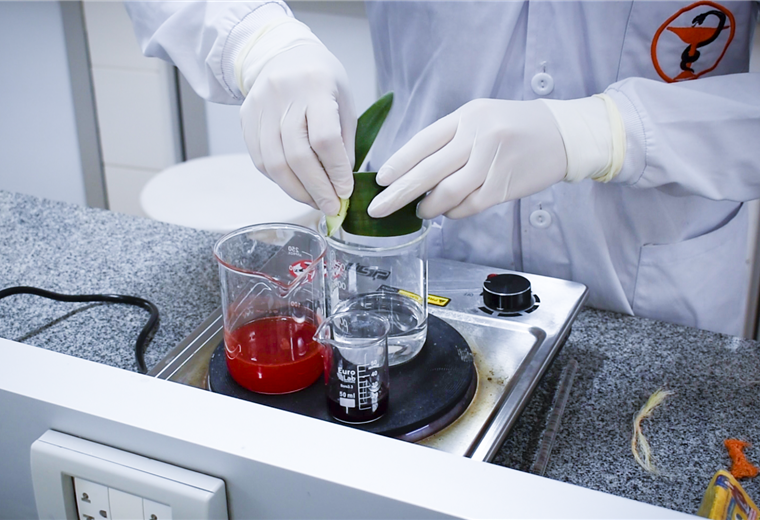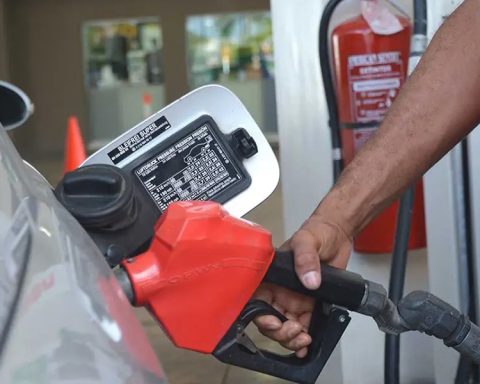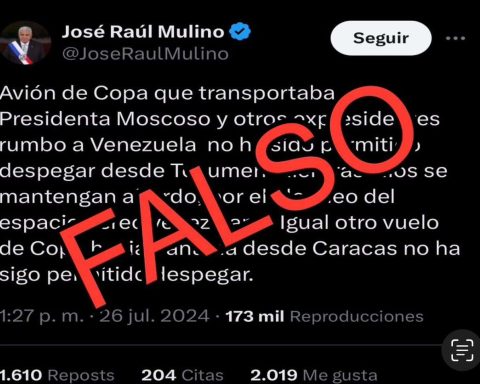July 21, 2023, 9:00 AM
July 21, 2023, 9:00 AM
Can you imagine finding fabrics, threads or compresses made with the leaves of the pineapple plant on the market and contributing to the preservation of the environment? Although still experimental, seven students from Unifranz’s Biochemistry and Pharmacy course in Cochabamba made these textiles as part of a student project.
The result was interesting. The textiles made with the leaves of the pineapple plant are resistant, degrade in a minimum time and, most importantly, the people who use them could add their grain of sand to caring for the environment and the fight against climate change.
Pineapple, a plant species with several properties
The pineapple Ananas comosus (L.) is a plant species that has several properties and benefits. Its chemical composition accounts for 89% water or bromelain. It is also a source of vitamins A and C, potassium, iron and calcium.
The consumption of the ripe pineapple fruit gives many properties to the human body and is recommended in treatments for:
• Fluid retention (acts as a diuretic)
• Intestinal transit problems and constipation (because of its great laxative power)
• Hypertension, cholesterol and anemia
• Poisoning (works as a purifier)
• Immune system disorders (reinforces the decrease in defenses and helps the formation of red and white blood cells)
• Degenerative and cardiovascular problems
• Poor blood circulation
• Problems in bone growth, tissues and nervous system in children.
Pineapple cultivation is carried out on a large scale. The Cochabamba tropics is perhaps one of the regions with the highest production. Data from the Ministry of Productive Development reveal that pineapple production increased from 52,292 tons per year in 2006 to 86,720 tons in 2021. While the cultivated area went from 3,444 hectares to 5,008 hectares.
Pineapple leaves in medicine and other uses
Pineapple cultivation in the Cochabamba tropics focuses on the fruit; however, the leaves can also be used in the medical field or in the production of textiles.
As a medicinal plant, pineapple leaves cure nosebleeds, glandular tuberculosis, vomiting due to bacteria or viruses, relieves flu and cough, dysentery, diarrhea, inflammation of the throat or hemorrhoids, among others.
Likewise, its high content of insoluble fiber makes it possible to extract them and obtain textiles, according to the director of the Biochemistry and Pharmacy course at the Franz Tamayo University in Cochabamba, Daniel Pinto.
During the first semester of this year, students of this career carried out a project, motivated by the environmental problem of not discarding the pineapple leaves after the selection of the fruits.
“The objective was to transform this raw material into a product of interest such as textiles. This was a descriptive, longitudinal, experimental study, but it will continue later,” he says.
The project was worked on in six stages that includes the collection of raw material, quality control of the raw material, fiber extraction from pineapple leaves, quality control of the fiber obtained, textile manufacturing, and quality control of the finished product.
According to Pinto, nine kilograms of raw material were collected. “98% fiber was extracted with the scraping method and it was analyzed that the fiber was totally insoluble, such as cellulose and lignin. It did not present microorganisms, it was not toxic, it was resistant and had an affinity for red staining (…)”, says Pinto.
With the fiber, the students made textiles such as woven fabric, thread, compresses, placemats for the dining table, thick cloth, and others, which degrade in a minimum of time. In case the project continues in the future, machinery could be used to improve the process.
It is known that in Brazil some ecological textiles are already made from this product (pineapple leaves). Likewise, in China they make textiles, clearly biodegradable, based on bamboo and in Europe it is considered sustainable to generate fabrics based on cotton sheets.
students concerned about the environment
The seven students who participated in the project are at a basic level of the career. According to Pinto, they chose to work on this line of research in order to avoid environmental contamination and convert pineapple leaf waste into interesting products.
“In addition to opting for the production of textiles free of animal cruelty, this idea arose since the family of one of the students is dedicated to the cultivation of pineapple and, to some extent, they want to improve their cultivation processes and avoid the waste of pineapple leaves, contributing to sustainable development and the production of biodegradable textiles”, says the academic.
For Pinto, it is essential to promote lines of research that have to do with the development of products of environmental interest, but mainly related to the concept of “products with principle” and contribute to the resolution of the different problems of real life in the environment and thus develop skills typical of the profession, but with awareness of the balance between innovation and responsibility.
“Our career is characterized by the wide field of research. One of the areas of greatest interest is production (…). It is relevant to consider that within these investigations we aim at biosustainability or care for the environment (…). We are developing competencies in students that will be a great tool for them in the future”, says Pinto.
Alarming production of plastics
In Bolivia, according to a diagnosis by Servicios Ambientales SA and WWF (World Wildlife Fund Inc), it is estimated that at least 142,699 tons of this material are discarded annually (data as of July 2022). Of this amount, around 5% ends up in open-air dumps or bodies of water, contaminating nature and affecting ecosystems.
Plastic bags, polystyrene containers and plastic bottles are the most discarded materials.
Likewise, annually, the country imports around 285,000 tons of plastics (60% manufactured material; 20% primary material; and 20% non-primary material) at an approximate cost of 560 million dollars.
Meanwhile, National Geographic data shows that every minute, one million plastic bottles are sold worldwide and that more than 90% of plastics are produced from fossil fuels. Also that, in 2018, the global production of plastics was 359 million tons, a weight similar to the approximate weight of the world population.
If the data hold, the oceans would contain more plastic than fish in 2050 according to data from the United Nations (UN).

















